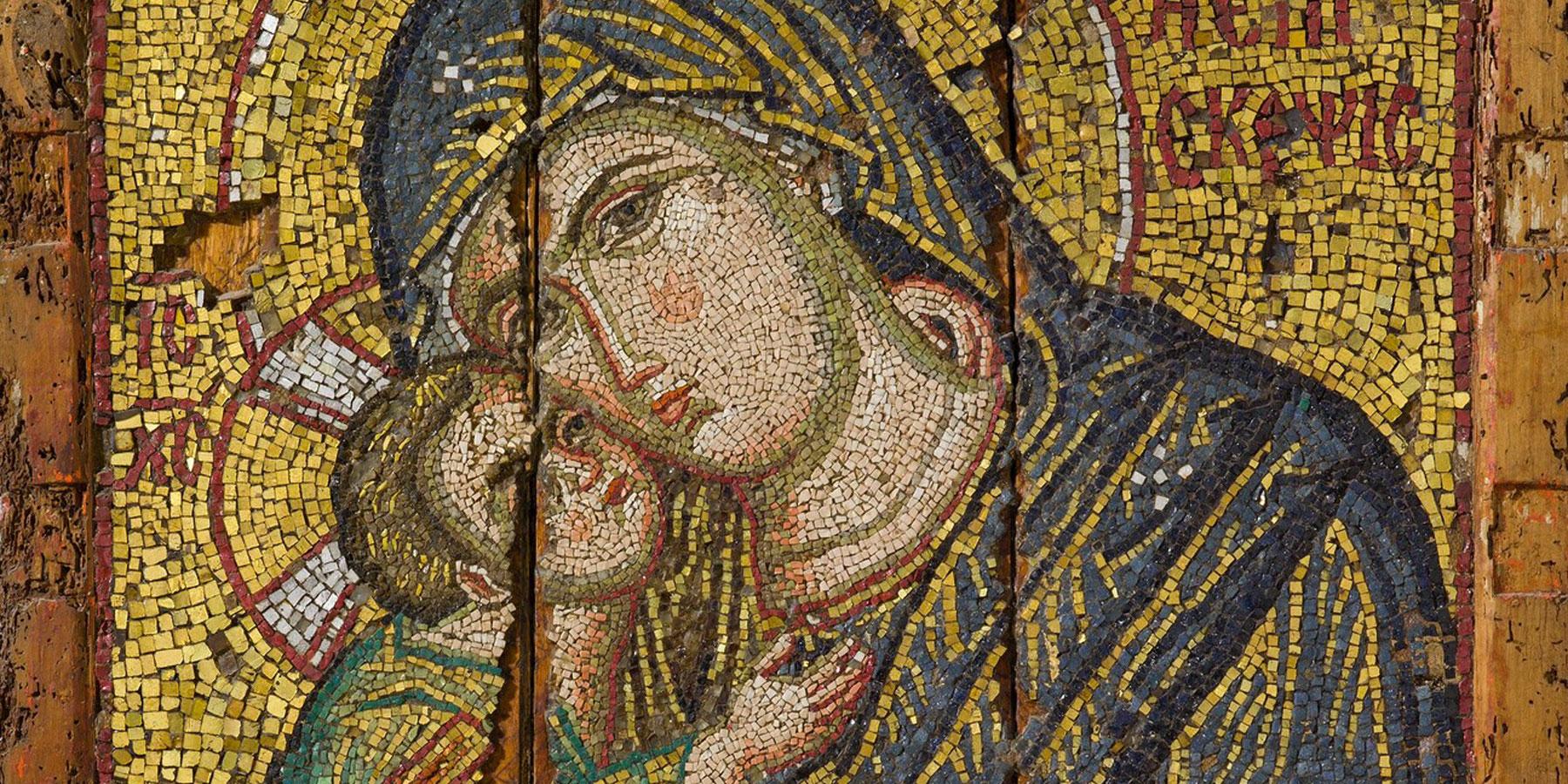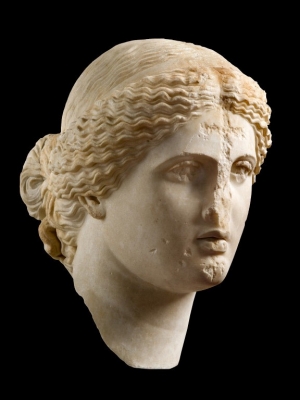In 313 Emperor Constantine granted freedom of worship for all faiths, prohibiting the persecution of Christians, and in 380 Emperor Theodosius I proclaimed Christianity the official religion of the empire. The transition from paganism to Christianity, however, was gradual. Throughout the fourth and fifth centuries, Christians and pagans coexisted, sometimes in conflict. The traditional gods continued to hold power, as the statuettes of pagan deities here indicate, but conversion to monotheistic Christianity increased rapidly.
Some early Christians defaced pagan images, as in the case of the head of Aphrodite in this gallery. As Christians took the first steps toward developing a new iconography, they also reinterpreted pagan images to express their beliefs. The mythological Orpheus taming wild beasts with music became an allegory of Christ, whose teachings brought harmony to all believers. Traditional pastoral images of a shepherd guarding his flock became Christ as the Good Shepherd.
In this transitional period, artists moved away from the classical style based on ideal human proportions and explored more spiritual modes of representation. Experimental in both style and imagery, the art they created offers fascinating visual evidence of one culture transforming itself into another, of the classical becoming medieval.





